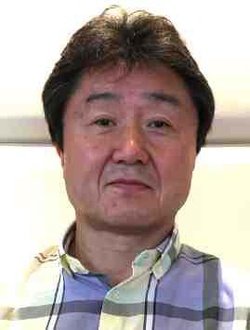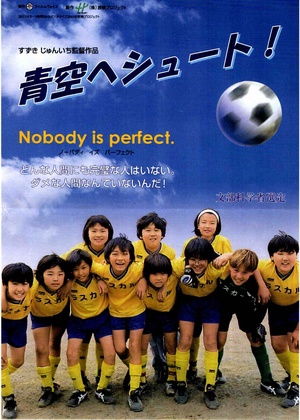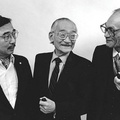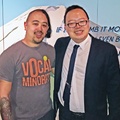Earlier in the year, I had a bit part in Cal State University Dominguez Hills’ program “And Then They Came for Us … ,” held in February. It was in held conjunction with the 75th anniversary of Executive Order 9066. While the main event was on Thursday, Feb. 9, my part was related to arranging the screenings of three movies: Farewell to Manzanar on Monday, Feb. 6; and on Tuesday, Feb. 7, Going for Honor, Going for Broke: The 442 Story, and MIS: Human Secret Weapon.
The latter film was directed by Junichi Suzuki, a Japanese national who worked and lived here locally in the U.S. with his wife, actress Rumi Sakakibara, for 11 years before returning in the summer of 2012. (Read my past columns in the Rafu Shimpo about Suzuki at: Filmmaker Junichi Suzuki Completes Nikkei Trilogy with MIS: Human Secret Weapon; MIS: Human Secret Weapon Delivers Humanity)
Suzuki used that decade and a year to complete what I call his “Nikkei trilogy,” three feature-length documentaries that put his lens on aspects of the Japanese American experience. They are 2008’s Toyo’s Camera: Japanese American History During WWII, 2010’s 442: Live with Honor, Die with Dignity, and 2012’s MIS: Human Secret Weapon.
That’s quite a sustained, prolific run in just a few years and really shows what an efficient filmmaker Suzuki is. Together and individually, they represent a valuable collection of stories that preserve Japanese American stories for decades to come for disparate audiences.
It’s also worth noting that Suzuki defied the conventional wisdom that Japanese in or from Japan don’t think much about their “cousins” whose ancestors left Japan decades ago for Hawaii, North and South America.
Ironically, Suzuki told me in an interview a few years ago that by doing these documentaries and learning about Japanese Americans, it helped him better understand on a personal level what it meant to be Japanese.
In order to show MIS: Human Secret Weapon at the CSUDH event, I reached out to Suzuki via email and got his permission and that of producer UTB to publicly screen it. In an email from Suzuki, he wrote: “If you have a chance to see me in Tokyo, please call me.”
I had no plans to visit Japan, but I had to make an unexpected visit to Japan this summer for a family-related medical emergency (all’s well now). It was so unexpected that I didn’t realize that my passport had expired, and I needed to scramble to get a new one at the 11th hour!
But I made it over there and after things settled down, I took time to visit Suzuki, meeting him at a coffee shop for a couple of hours on a rainy Tokyo day.
The first thing to say about Suzuki appears to be healthy, considering he was almost killed in a 2010 car accident that occurred while traveling between Los Angeles and Las Vegas for a screening of his 442 documentary. Someone meeting him for the first time might not even know he was hurt badly — but the scar on his arm where a metal rod was surgically implanted shows otherwise.
To be honest, my visit with Suzuki was social and I didn’t take notes for specific dates of upcoming screenings and his other activities, but he did give me three flyers for past screenings of his films held at Yokohama’s Jack & Betty theater, including his 2004 comedy Aozora-e-Shoot! (also known by its English title Go Rascals!); it was just nice to spend some time with this talented director.
I’m not sure what Suzuki and his production company have in store for his next project; since returning to Japan, IMDb.com shows him having completed a couple titles, Crossroads and the documentary Wa-shoku Dream: Beyond Sushi, both from 2015. I can say that Suzuki would be a great resource for an American movie producer who might need someone to direct a movie — or part of a movie or miniseries — in modern-day Japan, or maybe something historical that included Issei in the U.S. or that involved present-day Japanese living in the U.S.
No matter what, we are all richer for Junichi Suzuki’s “Nikkei trilogy.”
*This article was originally published by the Rafu Shimpo on September 22, 2017.
© 2017 George Johnston








